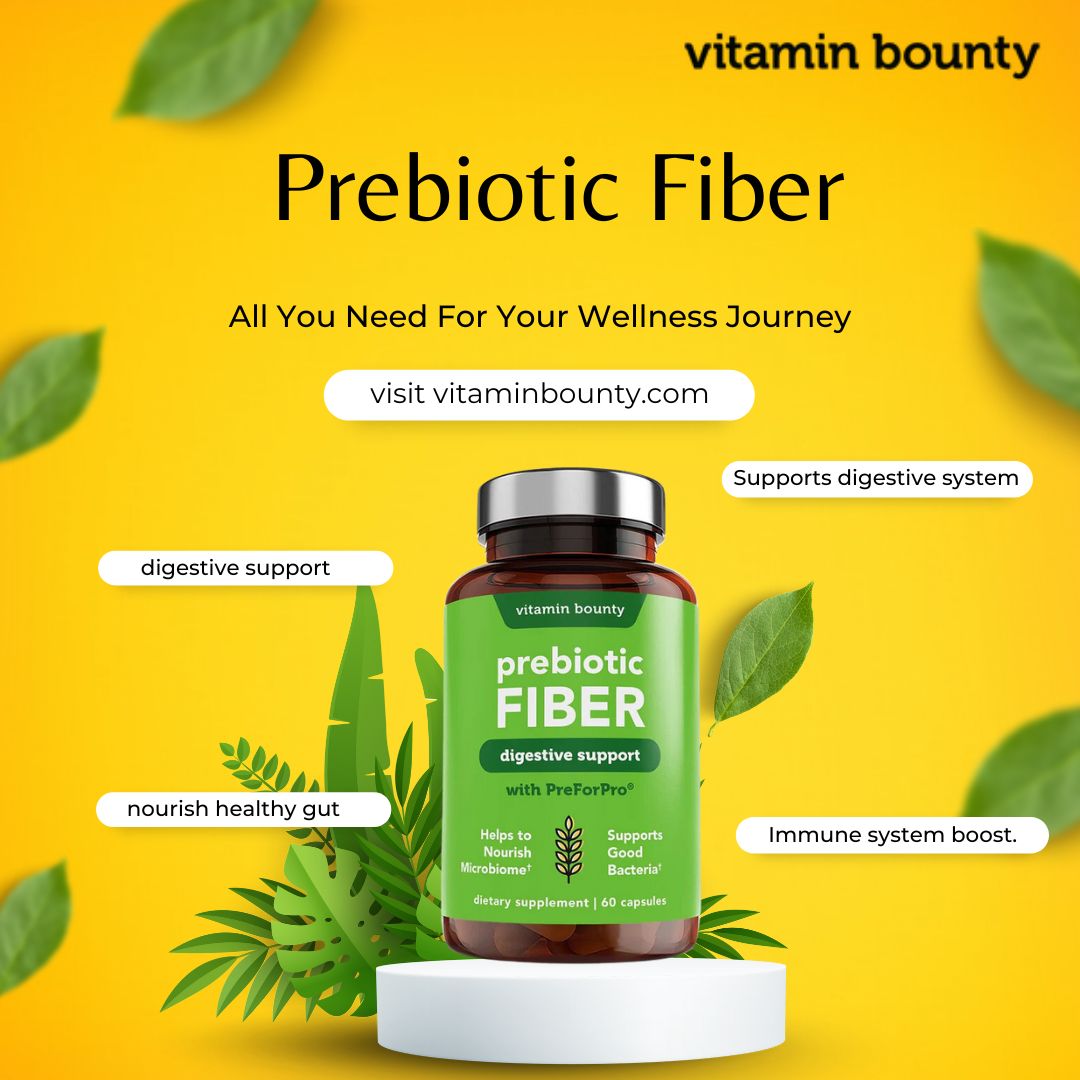In recent years, a lot of focus has been placed on understanding the role of Prebiotic Fiber in promoting gut health and overall well-being. Prebiotics are the live beneficial bacteria that positively impact overall health. Prebiotics are non-digestible fibers that act as a nutrition source for beneficial gut bacteria. This blog will give a clear insight into what prebiotic fiber is and where it can be sourced from, the benefits of the fiber on health, and how you can enhance your uptake of the fiber.
What is Prebiotic Fiber?
Prebiotic fibers are fibers in the diet that are not broken down by digestive enzymes and are not absorbed into the blood but instead delivered to the colon. Prebiotic fibers selectively promote the growth and activity of braced bacteria in the colon known as probito. The main characteristic of Prebiotic Fiber is that it helps in the growth of prebiotics, which are essential for gut health.
Prebiotic Fibers and Effects on Health
Here are some of the prebiotic fiber benefits:
Promotes Gut Health: Prebiotic fiber also enhances healthy gut bacteria, such as Bifidobacteria and Lactobacilli, by feeding them.
Enhanced Digestive Function: Prebiotic fibers play an important role in supporting the development of prebiotics and thus enhancing digestion and bowel movement.
Boosts Immune Function: Prebiotic fiber may improve the immune system’s capability and diminish inflammation due to a well-balanced gut microbiome.
Supports Weight Management: Several investigations indicate that the consumption of prebiotic fiber also reduces appetite. This, in turn, increases the feeling of satiation and assists in weight loss endeavors.
Sources of Prebiotic Fiber
Inulin: Found in chicory root, jerusalem artichokes, onions, and garlic.
Fructooligosaccharides (FOS): These are seen in products such as bananas, asparagus, and wheat.
Galactooligosaccharides (GOS) are present in pulses (including lentils and chickpeas) and some types of dairy foods.
How to Access Prebiotic Fiber in Your Diet?
Eat More Fiber-Rich Foods: Always ensure that you take fruits, vegetables, and whole grains, and take your legumes regularly.
Choose Prebiotic-Rich Foods: As much as possible, include foods that are rich in prebiotic fiber in your diet. These include onions garlic, bananas, and oats.
Consider Prebiotic Supplements: Prebiotic fiber supplements may be needed and should be incorporated into your diet to obtain the necessary daily amount.
Possible Implications and Risk Factors
Although the consumption of Prebiotic Fiber is beneficial from a psychological perspective, some people can experience GI symptoms, including bloating and gas, due to high-fiber diets. To reduce the severity of these symptoms, it is advisable to slowly increase the fiber intake as well as maintain the water intake.
Prebiotic Fiber and Chronic Disease Prevention
Cardiovascular Disease: It can reduce blood cholesterol and improve lipid profiles, generally defined as factors associated with the likelihood of developing heart ailments.
Tyle 2 Diabetes: It may also positively impact insulin sensitivity and decrease the prevalence of Type 2 diabetes.
Certain Cancers: Some of the short-chain fatty acids produced by fermentation of prebiotic fiber in the colon are well-known to exhibit anti-inflammatory and anti-cancer characteristics.
Eating a variety of approved prebiotic fibers can help with overall health care and decrease the chances of getting chronic diseases.
Prebiotic Fibre and Mental Health
Improved Mood: Prebiotic fiber increases the production of short-chain fatty acids, which stimulate the release of the feel-good chemical serotonin.
Reduced Anxiety: Research suggests that prebiotic fiber improves a person’s stress resilience and lowers anxiety.
Cognitive Function: Consuming prebiotic fiber has beneficial effects on the brain’s workings and memory, possibly because of its anti-inflammatory effects.
FAQs
1. How does prebiotic fiber differ from prebiotics?
Prebiotic fiber is a dietary fiber that serves as fuel for probiotics, which are live beneficial bacteria naturally found in the gut. Probiotics are live microorganisms that confer health benefits when consumed in adequate amounts.
2. Are there any side effects of consuming prebiotic fiber?
While prebiotic fiber is generally safe and well-tolerated, some individuals may significantly experience mild digestive discomfort, such as bloating, gas, or abdominal cramps, when increasing their fiber intake. It’s essential to gradually introduce prebiotic-rich foods or supplements into your diet and drink plenty of water to help minimize these effects.
3. How long does it take to see the benefits of consuming prebiotic fiber?
The timeline for experiencing the benefits of prebiotic fiber can vary from person to person. Some individuals may notice improvements in digestive health, such as increased regularity, within a few weeks of incorporating more prebiotic-rich foods into their diet. Other benefits, such as immune support or weight management, may take several weeks to months of consistent consumption.
4. Is prebiotic fiber suitable for everyone, including children and pregnant women?
Yes, prebiotic fiber is generally safe and beneficial for most people, including children and pregnant women. However, it’s essential to introduce prebiotic-rich foods gradually into children’s diets to avoid digestive discomfort. Pregnant women should consult with their healthcare provider before starting any new dietary supplements, including prebiotic fiber.
Conclusion
Consequently, Prebiotic Fiber is an essential addition to the human diet since it positively impacts gut health and digestion processes. Learning about them allows you to add more prebiotic foods to your diet and consider supplements to positively impact your gastrointestinal health and potentially your overall well-being. The ability of prebiotic fiber to foster the growth of favorable gut bacteria should strongly encourage people to use this kind of fiber.





